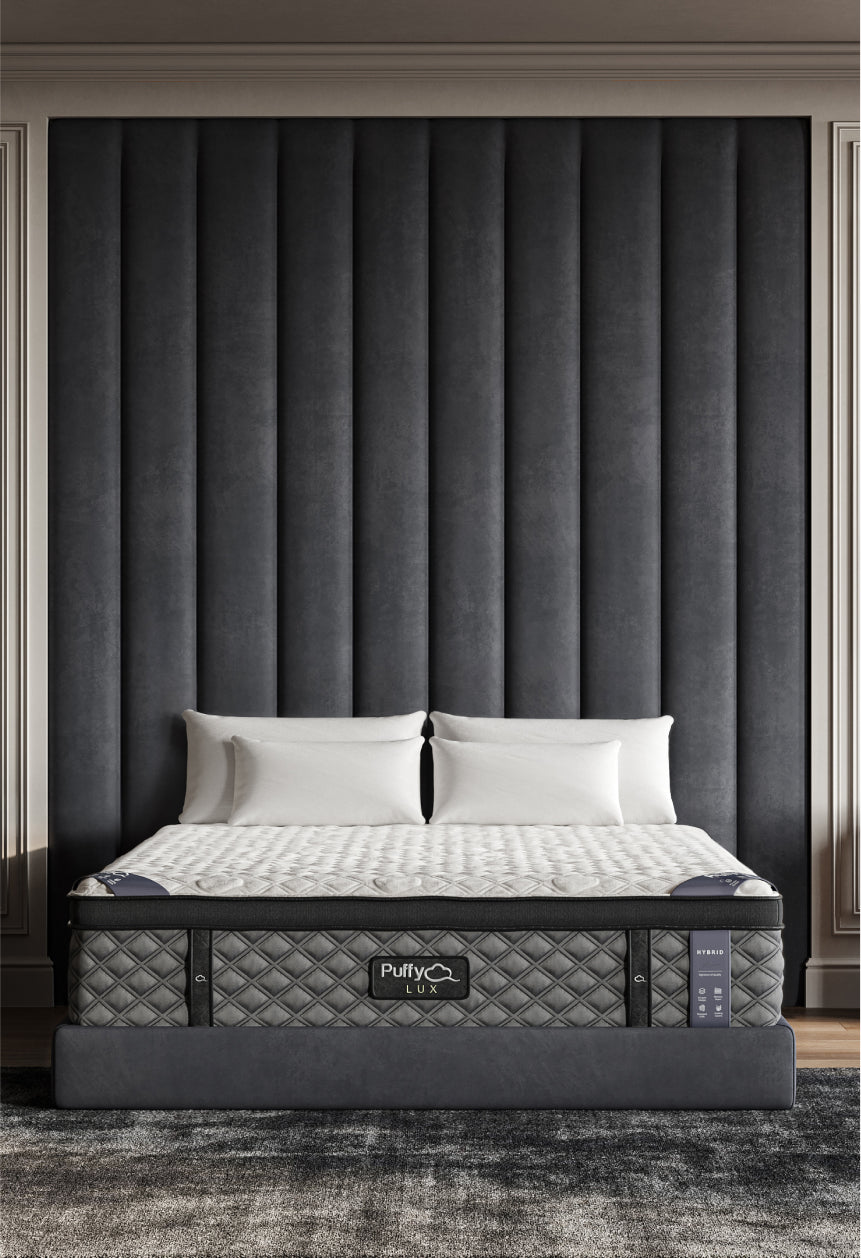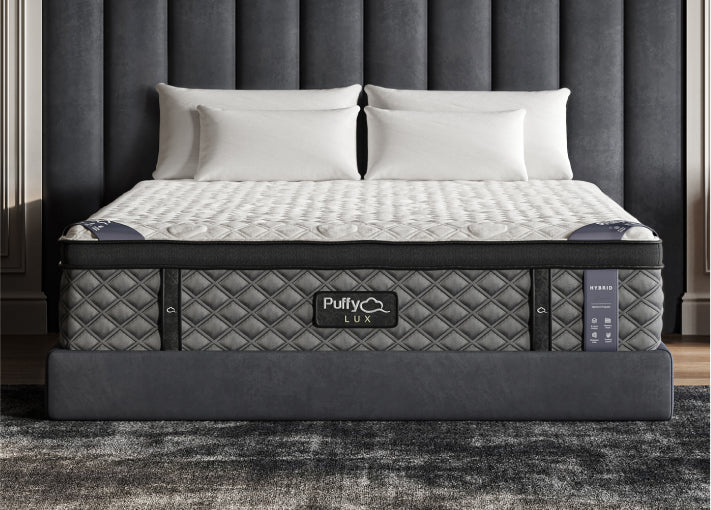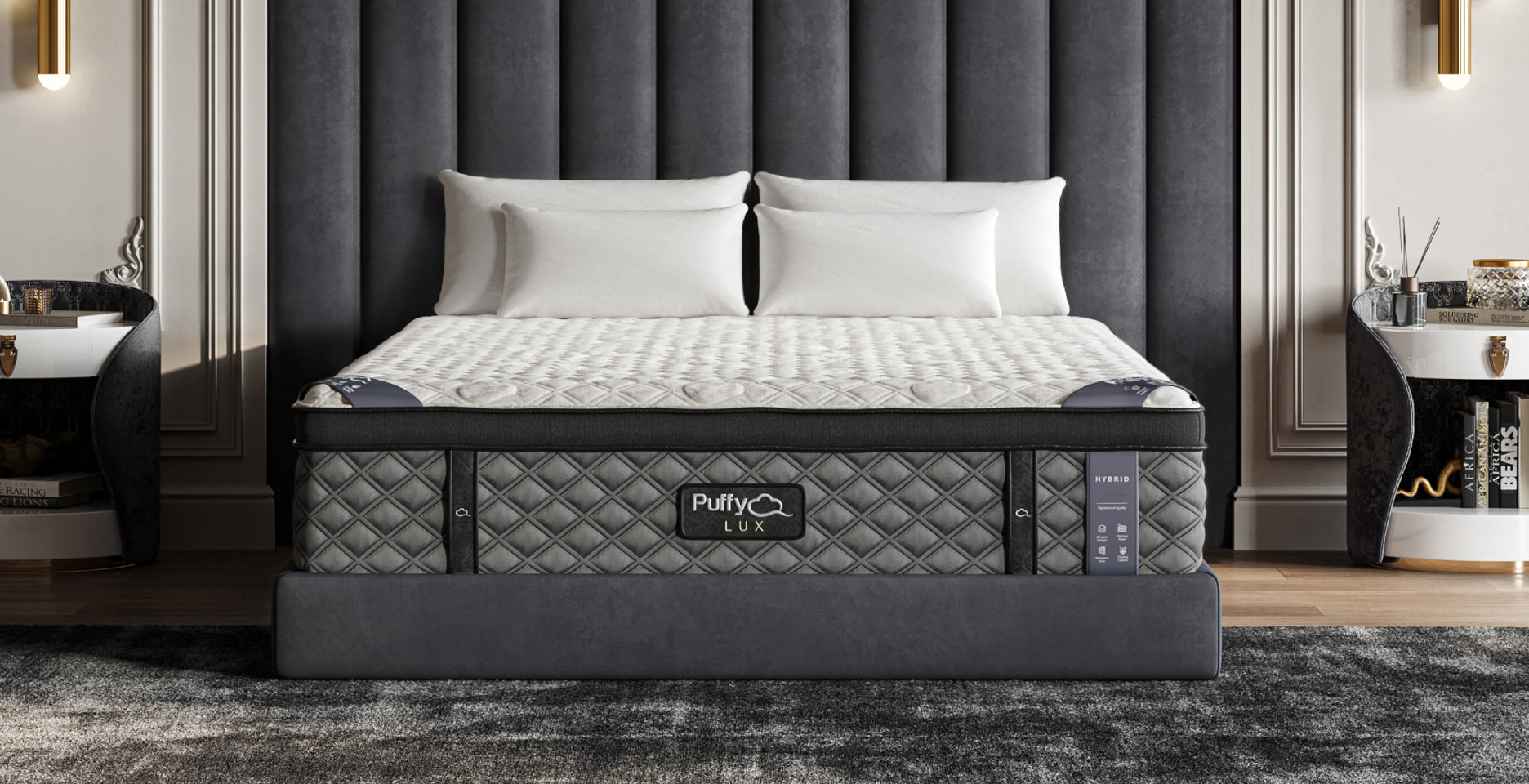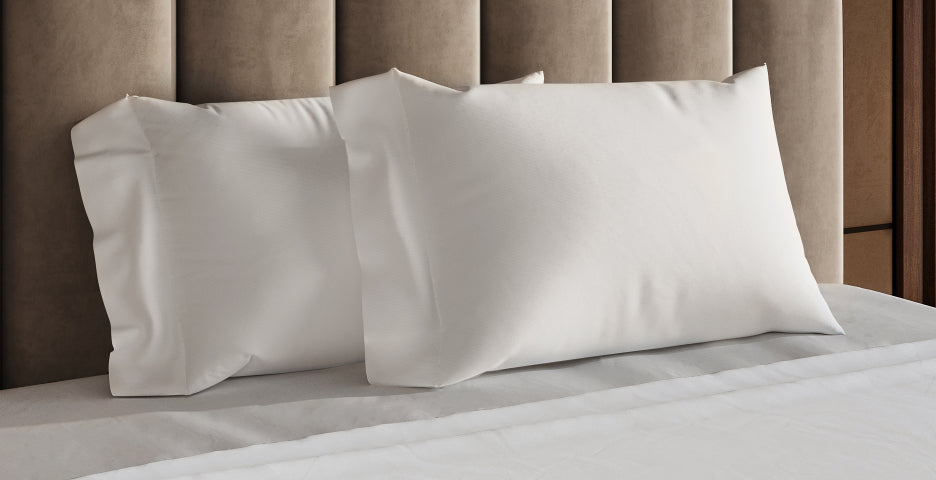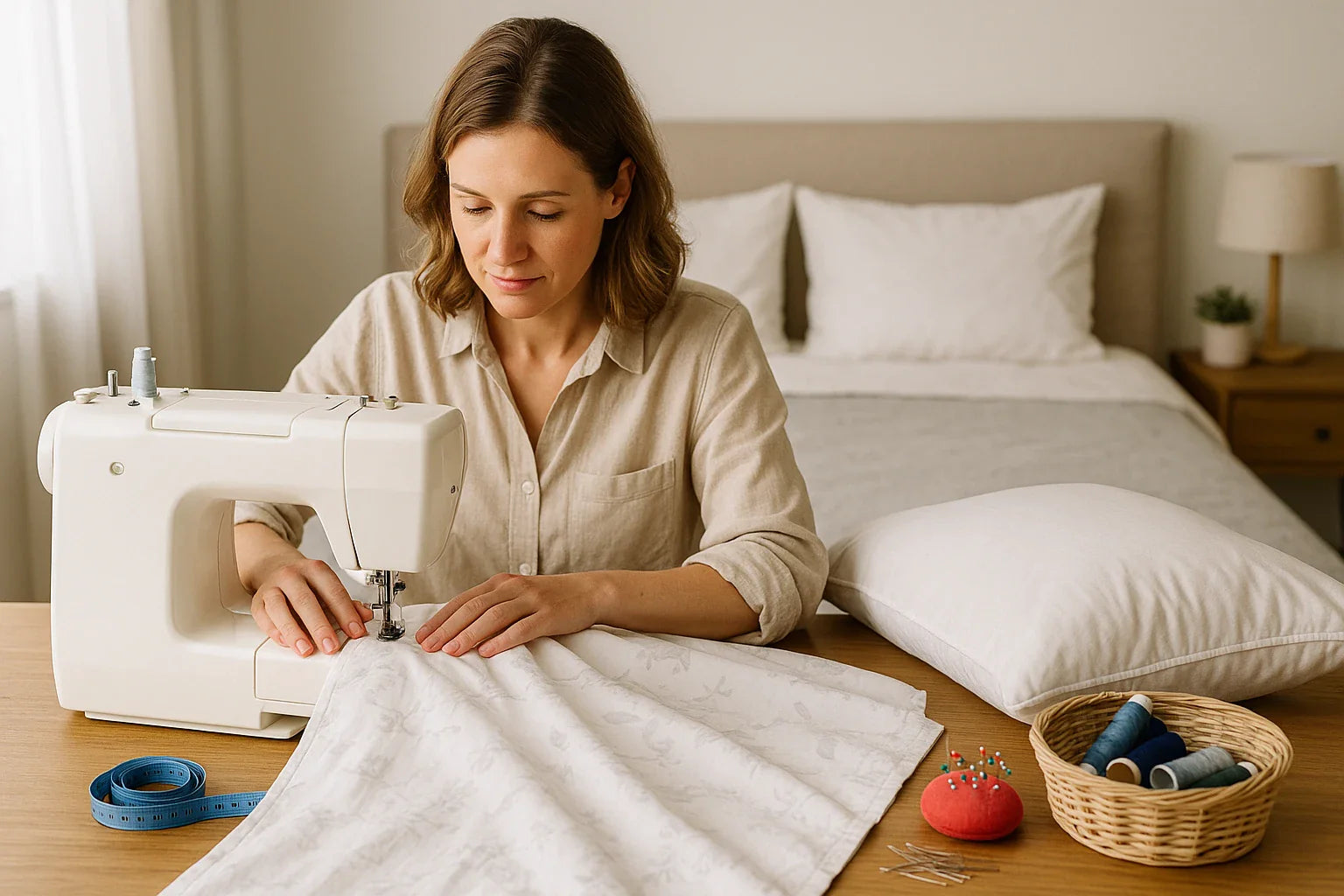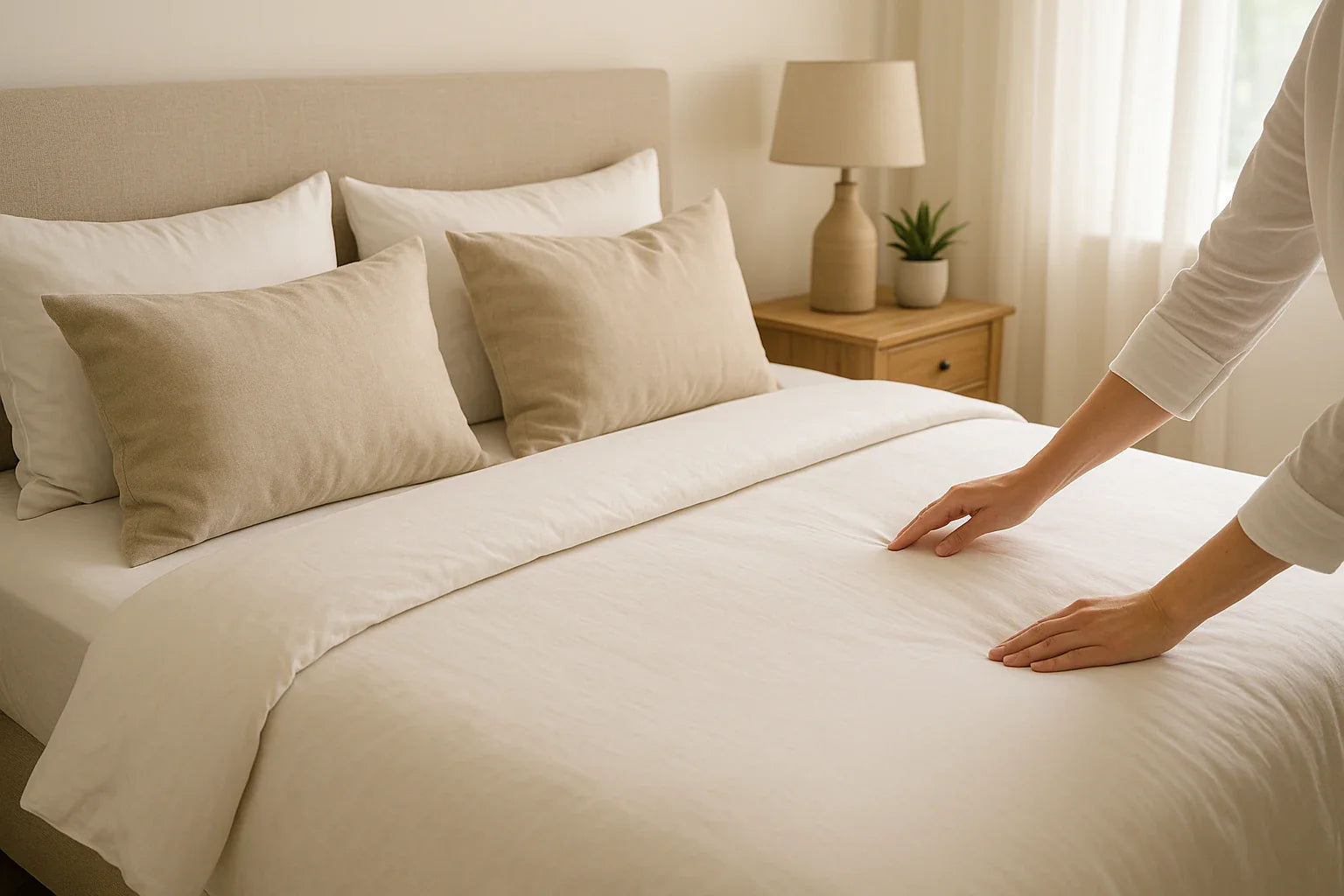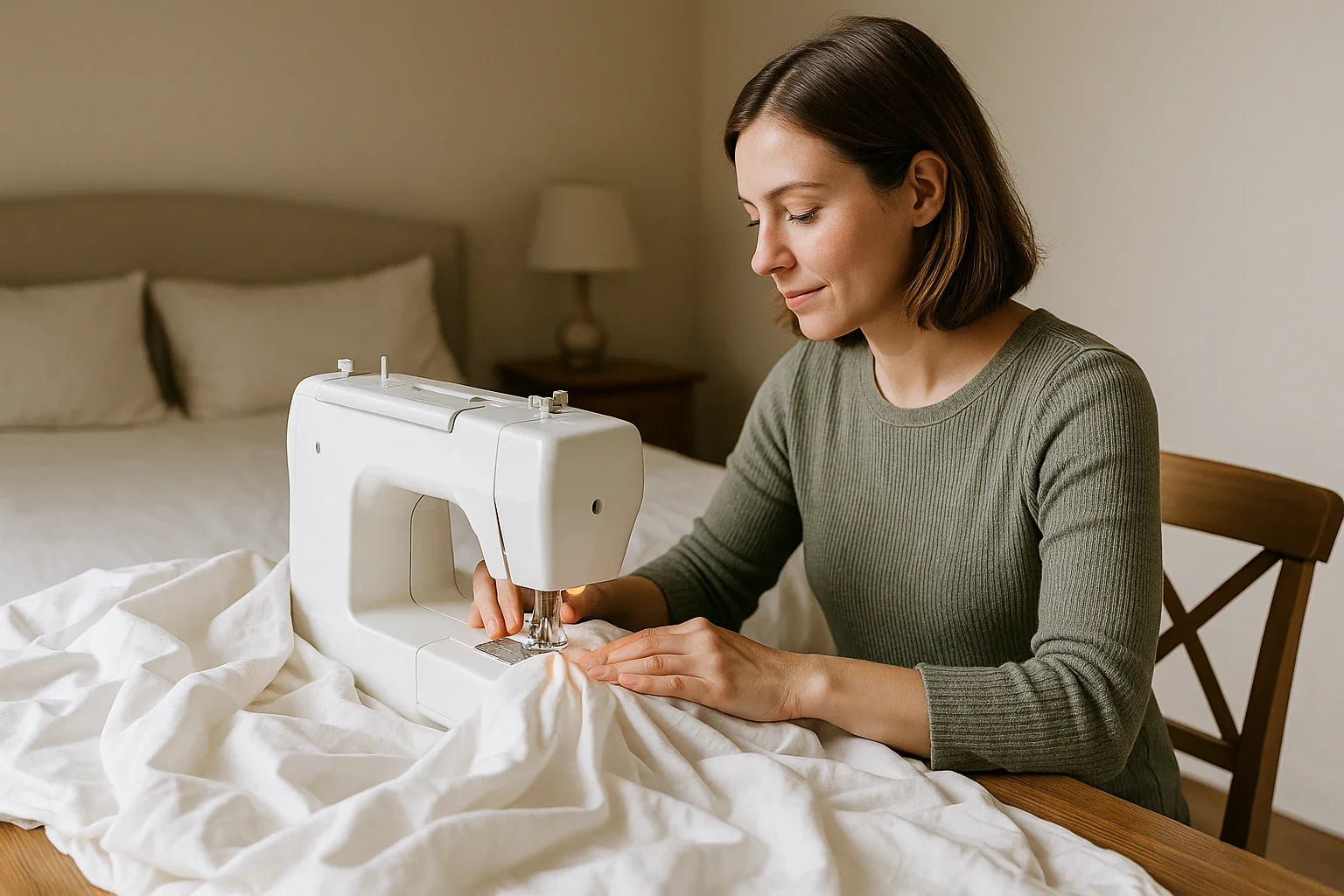Key Takeaways
- A comforter cover, also called a duvet cover, protects your comforter from dust, stains, and wear.
- It’s easy to remove and wash, offering a fresh and clean bed.
- Using a cover enhances your comforter’s lifespan by reducing the need for frequent washes.
When setting up a comfortable and stylish bed, a comforter cover can be a game-changer.
Many people wonder what exactly a comforter cover is, why it’s used, and how to put it on.
In this article, we’ll cover everything you need to know about comforter covers, including their benefits, how they work, and tips for choosing the right one.
What Is a Comforter Cover Called?
A comforter cover is often referred to as a duvet cover. Essentially, it’s a large fabric bag designed to hold a comforter or duvet. It usually closes with buttons, zippers, or ties to keep the comforter securely inside.
Key Features of a Comforter Cover
- Removable and washable: Comforter covers are easy to remove and machine wash, unlike the comforter itself.
- Fabric variety: Available in various fabrics like cotton, linen, microfiber, and silk, giving you options for different seasons and styles.
- Style flexibility: Comforter covers come in multiple designs, allowing you to switch up your bedroom decor without purchasing a new comforter.
By using a Puffy Lux Mattress along with a high-quality comforter cover, you create a sleep environment that stays clean and comfortable longer, as a mattress can help reduce allergens and provide support that complements your bedding.
Does a Comforter Need a Cover?
While it’s possible to use a comforter without a cover, there are several advantages to having one:
1. Easier to Clean
Comforters can be bulky and difficult to wash. A comforter cover, on the other hand, can be removed easily and washed more frequently, keeping your bed fresh and clean.
2. Added Protection
A cover acts as a protective layer, shielding your comforter from dust, spills, and everyday wear. This helps extend the lifespan of your comforter.
3. Style Flexibility
Want to change the look of your room? Switching out the comforter cover allows you to update your bedroom decor without purchasing a new comforter.
4. Temperature Control
Choosing a comforter cover material that suits the season can also impact your comfort. For instance, cotton covers work well in the summer, while fleece covers add warmth in winter.
Using a Puffy Cloud Mattress with its smooth and durable cover can help your comforter stay in place and reduce the need for frequent repositioning, keeping your bed looking neat and well-made.
Can You Put a Cover on a Comforter?
Yes, you can and should put a cover on a comforter for easy maintenance and style options. Here’s how it’s done:
- Turn the cover inside out and lay it flat on the bed.
- Lay the comforter over the cover, making sure the corners align.
- Attach the corners: Some covers come with ties or snaps to secure the corners of the comforter.
- Roll them together: Starting at the closed end, roll the cover and comforter toward the open end.
- Flip the cover: Flip the cover over the comforter and unroll it, ensuring everything is smooth.
Pros of Using a Comforter Cover
- Ease of cleaning: As mentioned, it’s simpler to wash a cover than an entire comforter.
- Customizable look: Change the cover to match your bedroom decor or seasonal theme.
- Enhanced durability: Protects your comforter from daily wear, dust, and potential stains.
How to Put on a Comforter Cover
Putting on a comforter cover can seem tricky, but the “burrito method” makes it easier. Follow these steps for a quick and hassle-free experience:
Step-by-Step Guide to the Burrito Method
- Lay the cover inside-out on the bed.
- Spread the comforter over the cover so the corners align.
- Roll them together from the closed end toward the opening.
- Flip the cover over the comforter.
- Unroll the “burrito” until the comforter is fully inside the cover.
This method keeps the comforter evenly distributed inside the cover, minimizing lumps and bunching.
Choosing the Right Comforter Cover Material
The type of fabric you choose for a comforter cover impacts the overall feel of your bed. Here’s a quick breakdown:
- Cotton: Soft, breathable, and ideal for most seasons.
- Linen: Lightweight and cool, perfect for warm climates.
- Microfiber: Durable and resistant to wrinkles, with a smooth feel.
- Silk: Luxurious and soft, but requires special care.
When to Replace Your Comforter Cover
While a comforter cover can extend the life of your comforter, the cover itself will eventually show signs of wear:
- Fading or discoloration: Frequent washing may cause some fading over time.
- Fabric wear: If the fabric feels rough or begins to fray, it may be time for a replacement.
- Style change: A new season or decor update can be a great excuse to change your comforter cover.
Regularly updating your comforter cover can refresh your bedding without the expense of a new comforter.
Comparing Common Comforter Cover Fabrics
| Fabric | Breathability | Softness | Ease of Care | Durability |
|---|---|---|---|---|
| Cotton | High | Soft | Easy | High |
| Linen | Very High | Soft | Moderate | High |
| Microfiber | Medium | Smooth | Easy | Very High |
| Silk | Low | Very Soft | Difficult | Moderate |
Conclusion
A comforter cover is a valuable addition to any bedding setup, offering ease of cleaning, style versatility, and added protection for your comforter. With the right material, care routine, and styling options, you can enjoy a cozy, stylish bed that feels fresh and welcoming.
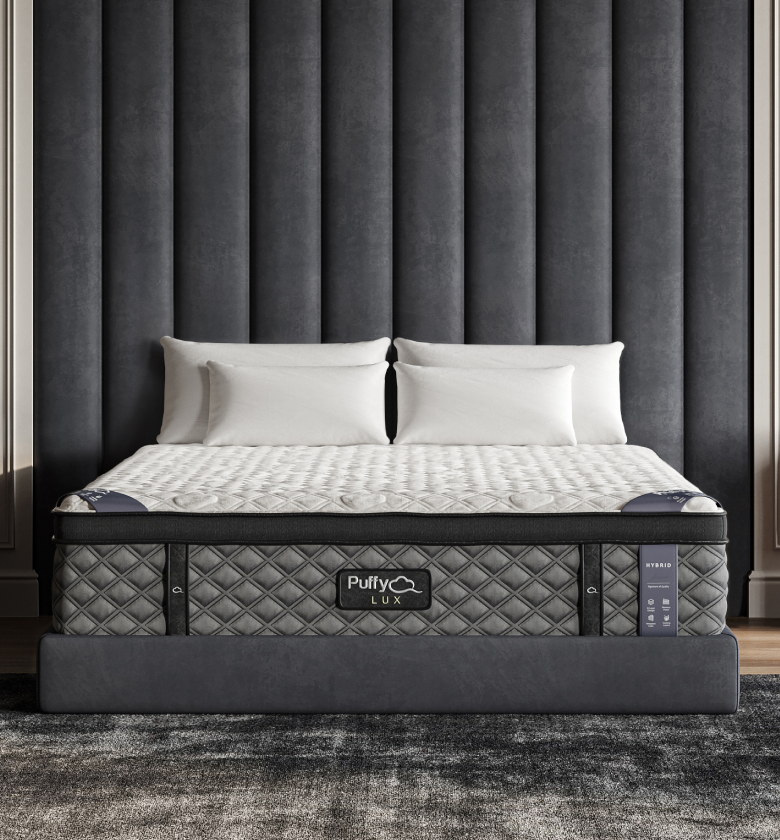
$1,350 in savings
Transform your comfort with the Puffy Lux.
Relax into award-winning comfort with this hybrid mattress:
- 8 layers of cloudlike luxury.
- Medium-plush feel.
- Gel-infused cooling.
- 101-night sleep trial.
